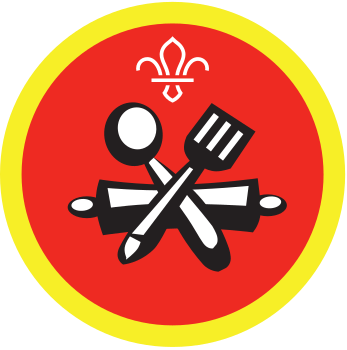Hunger hunt
You’ll need
- Scissors
- Pens or pencils
What makes up a healthy lifestyle?
Learn about living healthily by heading over to our healthy lifestyles page.
Healthy top tipsBefore you begin
- The person leading the activity should cut out the 'Food items' and then hide these in different places around the meeting place. Make a note of where each one is hidden.
Run the activity
- The person leading the activity should split everyone into small groups or ‘tribes’. Allow the tribes to come up with their own names. Tell them that each tribe’s just arrived in a new place where they’ll now be living. Each tribe should think about what kinds of food they’ll need to find if they want to live healthily in their new home.
More information can be found in 'What makes up a healthy lifestyle'.
- Tribes should create their own Eatwell plate by shading in segments of a paper plate with colours for the different food groups.
The Eatwell plate should show them that they need lots of carbohydrates (or starchy foods) and lots of fruit and vegetables. They also need some proteins, dairy and fatty or salty foods. Roughly, each food group should take up this percentage of the plate: Fruit and vegetables (40%), Carbohydrates (40%), Protein (10%), Dairy and alternatives (8%) and treats (2%).
- The person leading the activity should tell each tribe that they’ve found a mystical guide that shows them how to live well and be healthy. This is The Eatwell Guide.
- The person leading the activity should explain that the tribes’ new home has food all around, but lots of it is hidden. They’ll need to search as a team to find the food they need to eat a healthy diet. Everyone should start searching the meeting space for food items. Give them no more than twenty minutes.
If you’re lucky enough to have a large building or outdoor space, your tribes might need a bit longer to find what they need.
- As each tribe searches, they should match the food items they find to their related segments of their Eatwell plates.
- When all of the food items have been found, all of the tribes should return to where they started. The person leading the activity should look at what they’ve found. Anyone missing an important food group should do a trade deal with another tribe and swap for something they need. Do this until each tribe has a balanced selection of foods for their dinner.
If tribes begin to squabble rather than trade, remind them that too much of one food group can be bad for you too. In particular, too much fatty or salty food can affect your health, though the occasional treat is fine.
- The tribes should now compare their spoils. See who’s hunted and traded the best and put together the most balanced diet.
Reflection
The group have hunted down some foods that make up a healthy diet. Which food groups did your tribe want to find the most? Why were some food groups more important to find than others? Did you leave behind any food items because you already had too many of them, or did you take them in case you couldn’t find anything else?
Foraging for food can only get us so far. We need help from others to get all the healthy foods. How did your tribe set up trade deals with other tribes? Did you tell them about why they needed the food group you were selling? Which food groups were the most valuable?
Safety
All activities must be safely managed. You must complete a thorough risk assessment and take appropriate steps to reduce risk. Use the safety checklist to help you plan and risk assess your activity. Always get approval for the activity, and have suitable supervision and an InTouch process.
- Active games
The game area should be free of hazards. Explain the rules of the game clearly and have a clear way to communicate that the game must stop when needed. Take a look at our guidance on running active games safely.
Foraging fanatics might find the hidden foods too easily. Come up with ingenious hiding places to fool them. Even better, the person leading the activity could take one person from a tribe aside and tell them that they’re a spy for another tribe. Do this with a person from the other tribe too. Throughout the hunt, they should wait until they’re entrusted with food items, before running back to the other tribe with the food.
Refer to the notes you made about the hiding places to give hints to any tribes that are struggling. You could make a noise when they are getting close.
If some people have mobility issues that might restrict them in this activity, limit the playing area to one space that’s easy to move in.
All Scout activities should be inclusive and accessible.
The tribes could choose a part of the world where they live. They should research the food items that they’d be able to hunt for in that continent, and find out which things they’d need to trade for with other places.
Allow the tribes to come up with their own fun names, rituals and history, providing it doesn’t distract from the hunting and trading.

